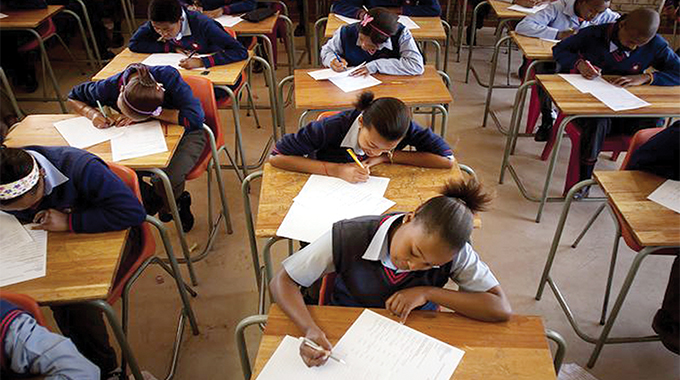EDITORIAL COMMENT: Progressive introduction of continuous assessment is best

Final examinations can be unfair sometimes. Pupils at school and students at institutions of higher learning prepare for two, three, four or five years for those final two or three hours to demonstrate their academic ability. The few designated hours can break or make an exam-writing person’s future, condemning those who fail and lifting those who pass.
Yet, many school pupils and college students may fail to impress in those few hours because of many factors, not because they are not academically gifted. It is possible that one can just study for the three-hour exam, cram a few concepts which luckily are in the examination paper and pass yet in actual fact that person is empty. Also, it is possible that one may panic and fail to settle right through the three-hour public test and get low marks yet the person knows their stuff.
As such, the three-hour test may not serve as an accurate assessment of the academic ability of a pupil or student. Indeed, Zimbabwe’s education system is internationally respected but the assessment mechanism that is in place has that one big weakness. It does not take into cognisance the progress that a child records through the course of their study, just depending solely on how one performs for those two or three hours in June or November.
We recognise that the Government identified this fundamental weakness and has, since 2017 been in the process of addressing it through the competence-based education curriculum. Some of the demands of competence-based education are the need for continuous assessment for examination sitting classes — Ordinary and Advanced Level. However, continuous assessment was abandoned a year later after an outcry by children, their parents and teachers over the huge amount of work it entailed.
Under that model, O- and A-level pupils were expected to be graded on the basis of combined marks for continuous assessment and final examinations in keeping with provisions of the updated education curriculum.
Pupils were supposed to be graded based on 40 percent theoretical examinations, 30 percent practical examinations and 30 percent continuous assessment.
The target is now is to re-introduce continuous assessment covering a broader range of learning areas by the beginning of next term in the next three months.
“We want to produce a child that can survive in any situation so we are producing skills as opposed to producing a child who can only cram,” said Primary and Secondary Education Permanent Secretary Mrs Tumisang Thabela.
“Before an exam you would find someone stuffing themselves with information. Regurgitate what the teacher has been saying. What was done over two years is dismissed over two hours. You are told that you are U or an A in two hours.
That is why even now we are debating about assessment.”
Teachers, she added, have a crucial role in the assessment process.
“The role of the teacher is to be a fair judge of the child’s progress. We have had continuous assessment in what used to be called practical subjects that children would have to do as part of assessment. In this case, we are opening it up to other learning areas rather than just limiting it to what we used to call practical subjects. The teacher really guides the child and they would be assessing, collecting those marks and banking them somewhere so that the child is assessed even if they have to move to another school. They will know that they will be having these points and they can add to those points,” she said.
The introduction of the competence-based education system is one of the wider reforms that are being introduced into schools. Others include the teaching of certain subjects that seek to produce a Zimbabwean pupil grounded in the national interest while, at the same time, equipping them with life skills.
As Mrs Thabela says, continuous assessment produces a solid pupil whose competence is more organic. The pupil would most likely know a lot more issues and be able to demonstrate it over the course of his or her education instead of doing so in a short period. This is good as concepts learnt in an organic fashion, that is over a long period, tend to sink in while those that are acquired a day before a final examination tend to depart as quickly as they were drilled in.
In addition, continuous assessment ensures that the pupil and the teacher concentrate continuously instead of wasting time in between and only concentrating on the eve of final examinations.
But we are mindful of the fact that continuous assessment can be cumbersome. Piles of records will have to be written and filed. Since every day would, effectively, become an examination day children may not have time to play and freshen up, yet every person, especially a young one needs some free time. The workload for the teacher is likely to increase too.
Looking ahead, we suggest that the Government introduces the new examination strategy beginning with a few subject areas, expanding them over the years. We wait to see if the target for May this year would be met but a rapid approach may shock the kids and their teachers.











Comments